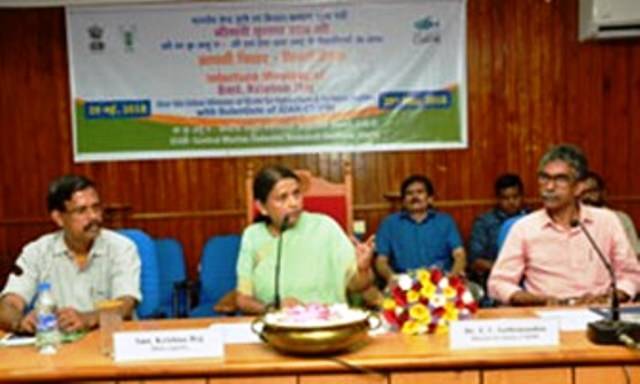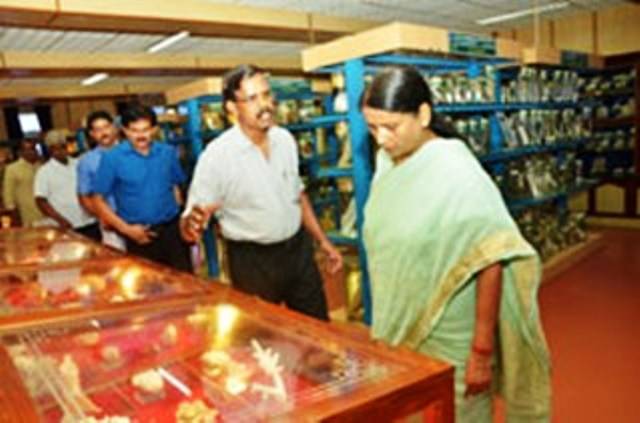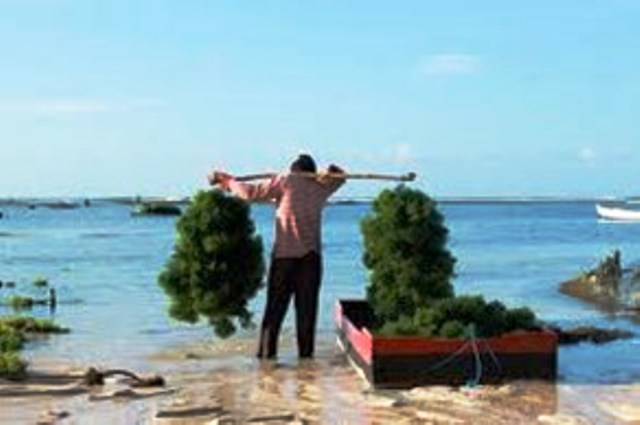
Using current technology, extensively available sea areas may be cultivated to produce crops that require no freshwater or fertilizers, while providing a variety of valuable ecosystem services. Following a deductive or principle-based approach that establishes primary production from seaweed biosynthesis as a basis of food production.
The objective is to provide both an overall account of the state of the art on seaweed farming as well as a contribution to the industry’s sustainable development. However, just eight Asian nations produced 99 percent of that while most of the world’s 150 countries and territories with coasts were yet to begin seaweed farming. Seaweed farming at sea is becoming an increasingly competitive biomass production candidate for food and related uses. With exponential growth over recent decades, farmed seaweed output reached 24 million tons by 2012.
Smt. Krishna Raj, Union Minister of State for Agriculture and Farmers Welfare urged to accelerate research to promote seaweed farming which has multidimensional industrial prospects, during her visit to ICAR-Central Marine Fisheries Research Institute, Kochi (ICAR-CMFRI).

Smt. Raj said seaweed cultivation will greatly be beneficial to the manufacturing of various Nutraceutical products, Medicines and Cosmetic products. It can also fetch extra income to fishermen, she added. She urged to organize village level campaigns to create awareness among the fishermen and farmers about the prospects of small-scale entrepreneurship in the fisheries sector. She called upon the scientists to implement innovative and diversified farming practices to woo more people into fish farming.
The growth of the seaweed aquaculture industry is good for the economy and good for the ocean. The process of growing seaweed is environmentally friendly. Apart from planting the seeds and ensuring the seaweed is in a clean environment, seaweed often does not need feed or additional attention. The plants can grow naturally. Seaweed farms also create safe and healthy nursery grounds for young fish and crustaceans that can later be harvested commercially or improve wild population levels. Merely the presence of seaweed farms prevents deep sea bottom trawling in certain areas and protects the sea floor.

Open ocean seaweed farms can even improve water quality. Many of the dangers the ocean faces today, specifically ocean acidification, can be mitigated by increasing the amount of seaweed grown.
The World Bank predicts that achieving a global production of 500 million tons of seaweed by 2050 would absorb 10 million tons of nitrogen, which is 30 percent of the nitrogen estimated to enter the ocean, and 15 million tons of phosphorus, which is 33 percent of the total phosphorus produced through fertilizers, from the ocean.
Rising carbon dioxide levels, the leading cause of ocean acidification, can also be mitigated through seaweed. Seaweed has an amazing carbon dioxide uptake and storage; kelp takes in five times more carbon than most land-based plants. That same seaweed production of 500 million tons would consume 135 million tons of carbon, which is 3.2 percent of the carbon added to seawater each year from greenhouse gas emissions.

Increasing seaweed aquaculture production may open the door for a more efficient form of renewable energy: biomass. The many environmental benefits of growing seaweed make it a unique solution to the renewable energy challenge. In addition, seaweed’s potential to be cultivated in seawater may lessen the growing competition for access to land and freshwater. In the United States, biomass-derived energy accounted for roughly five percent of the country’s energy in 2015, making biomass the largest form of renewable energy.
The ARPA-E estimated that seaweed cultivation in the United States has the potential to reach 500 million tons of red and brown algae, providing more energy than over 23 billion gallons of gasoline. However, current seaweed production has not yet reached the scale necessary to drive down costs and encourage a seaweed biomass industry.
Seaweed’s ability to break down environmental pollutants also makes its development a top priority for the aquaculture industry. Fish farming comes with many environmental challenges, mainly feed consumption. Some of the concerns about open-sea fisheries come from the fear that excess feed and fish feces negatively impact the surrounding ecosystem.
A solution to mitigate the excess organic and inorganic deposits left from farms is integrated multi-trophic aquaculture. Adding crustaceans and aquatic plants to finfish operations can turn fish byproducts into inputs for another species. According to research from SINTEF, the nitrogen emissions from salmon farming can be reused by kelp and help the kelp plant grow to a significantly larger size.
Safe and sustainable, seaweed aquaculture might be the much-needed solution to the question of responsibly feeding the world’s growing population.
The minister also visited the National Marine Biodiversity Museum and inspected the research laboratories at the CMFRI.
Scientists and other officials of the institute were also present on this occasion.















